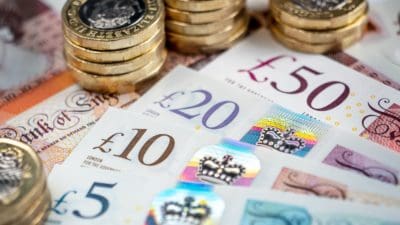One of the risks of being an income investor is that you can be seduced by attractive yields, which are sometimes a symptom of a declining business or a falling share price.
Take Tesco (LSE: TSCO) (NASDAQOTH: TSCDY.US), for example. The firm’s 4.1% prospective yield is very attractive, but, 4.1% is substantially less than the long-term average total return from UK equities, which is about 8%.
Total return is made up of dividend yield and share price growth combined — so will Tesco’s share price rise be enough to make up for this shortfall?
What will Tesco’s total return be?
Looking ahead, I need to know the expected total return from my Tesco shares, so that I can compare them to my benchmark, a FTSE 100 tracker.
The dividend discount model is a technique that’s widely used to value dividend-paying shares. A variation of this model also allows you to calculate the expected rate of return on a dividend paying share:
Total return = (Prospective dividend ÷ current share price) + expected dividend growth rate
Rather than guess at future growth rates, I usually average dividend growth between 2009 and the current year’s forecast payout, to provide a more reliable guide to the underlying trend. Here’s how this formula looks for Tesco:
(14.9 ÷ 363) + 0.0442 = 0.853 x 100 = 8.5%
My model suggests that Tesco shares could deliver an annual total return of around 8.5% over the next few years, approximately matching the long-term average total return of 8% per year I’d expect from a FTSE 100 tracker.
Isn’t this too simple?
One limitation of this formula is that it doesn’t tell you whether a company can afford to keep paying and growing its dividend.
My preferred measure of dividend affordability is free cash flow — the cash that’s left after capital expenditure and tax costs.
Free cash flow is normally defined as operating cash flow – tax – capex.
Tesco’s free cash flow in 2012/13 was £3,016m, more than double the £1,184m it spent on dividends. The firm’s dividend was also amply covered by free cash flow during the previous year, suggesting that a dividend cut is unlikely.







